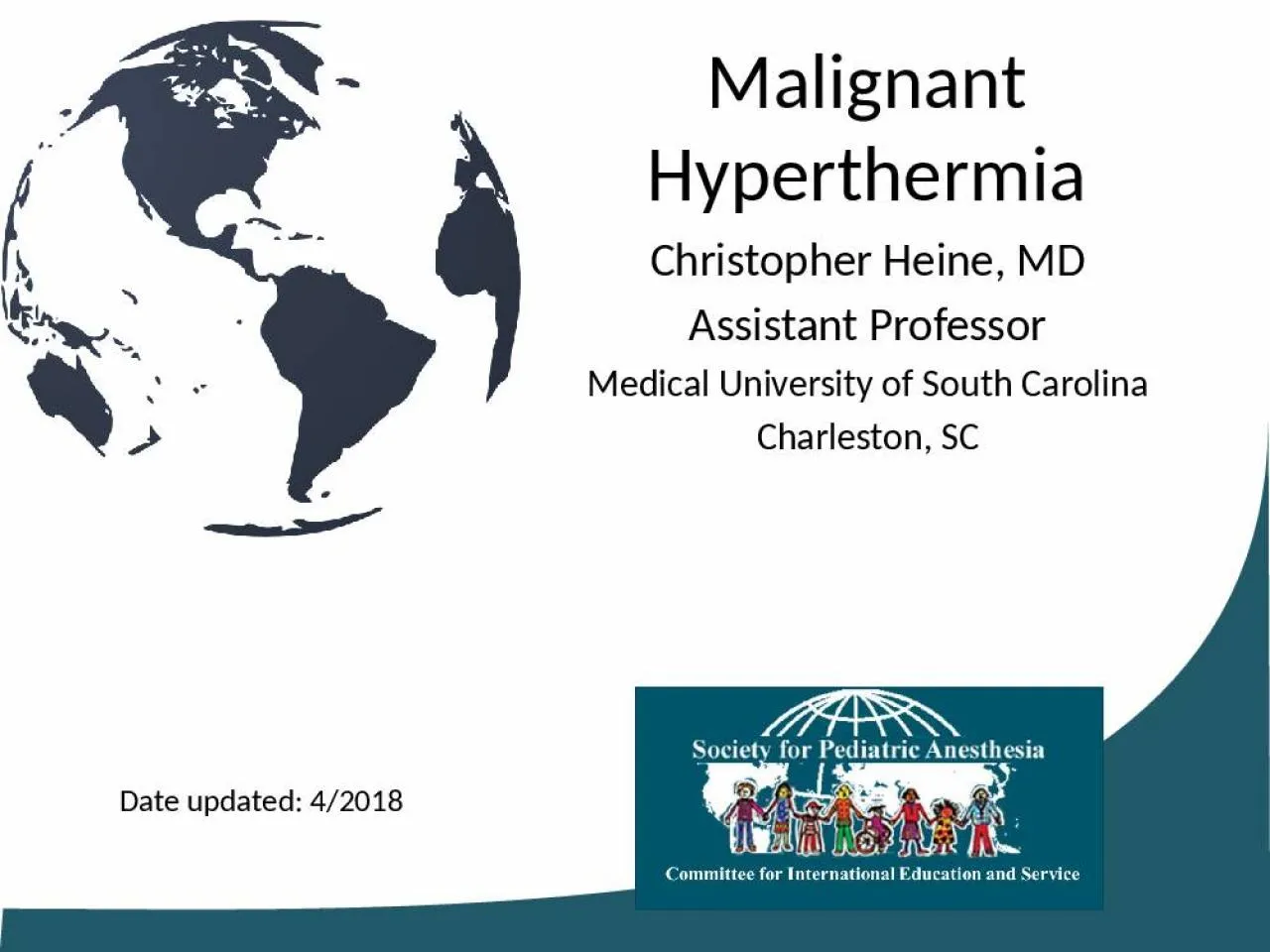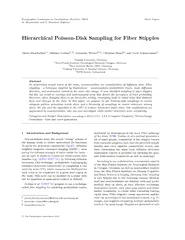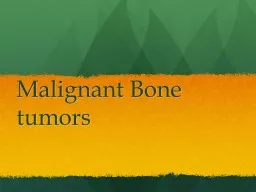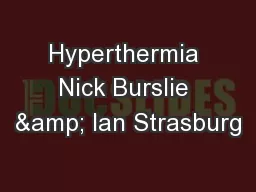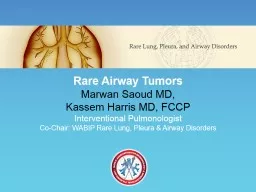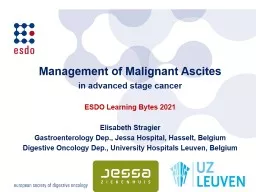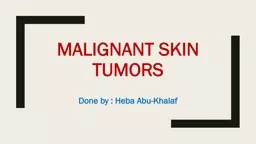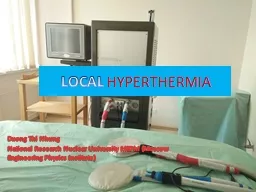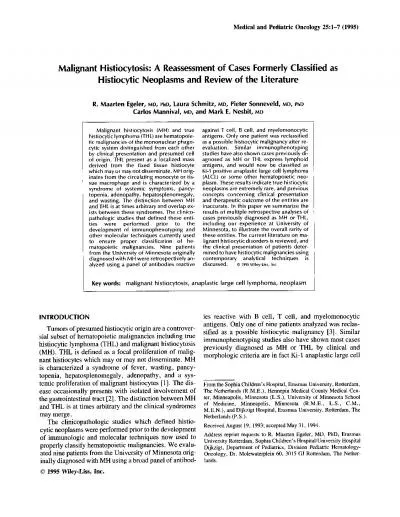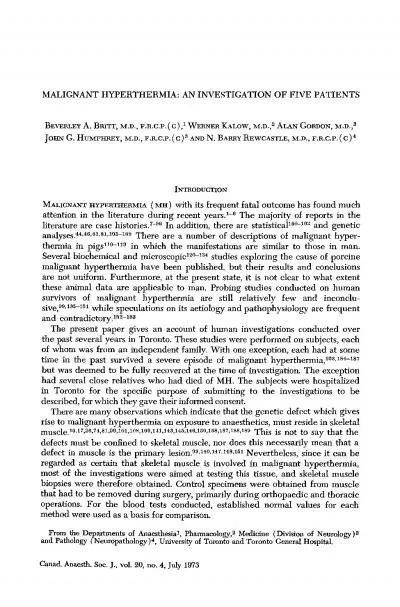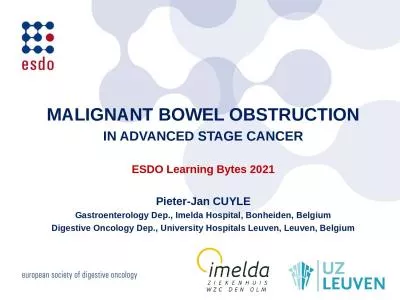PPT-Malignant Hyperthermia Christopher Heine, MD
Author : tabitha | Published Date : 2022-04-06
Assistant Professor Medical University of South Carolina Charleston SC Date updated 42018 Disclosures None Learning Objectives Review a brief history of MH Background
Presentation Embed Code
Download Presentation
Download Presentation The PPT/PDF document "Malignant Hyperthermia Christopher Heine..." is the property of its rightful owner. Permission is granted to download and print the materials on this website for personal, non-commercial use only, and to display it on your personal computer provided you do not modify the materials and that you retain all copyright notices contained in the materials. By downloading content from our website, you accept the terms of this agreement.
Malignant Hyperthermia Christopher Heine, MD: Transcript
Download Rules Of Document
"Malignant Hyperthermia Christopher Heine, MD"The content belongs to its owner. You may download and print it for personal use, without modification, and keep all copyright notices. By downloading, you agree to these terms.
Related Documents

